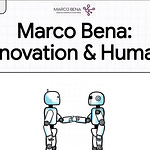Artificial Intelligence (AI) is no longer reserved for large companies or research laboratories. Today, it is becoming part of the daily life of non-profit associations under the French law 1901, offering unprecedented opportunities to optimize management, strengthen social impact, and gain efficiency, even with limited resources.
Why integrate AI into an association?
The non-profit sector faces many challenges: lack of time, human resources, administrative complexity, the need to better understand its members and donors, and the necessity to innovate to remain relevant.
AI is a powerful lever to address these issues by automating repetitive tasks, facilitating decision-making, and personalizing relationships with stakeholders.
Concrete examples of AI applications for an association
Administrative automation: AI can handle sending personalized emails, event planning, membership tracking, or generating certificates for volunteers. Tools like VolunteerHub or Galaxy Digital already facilitate these tasks.
Chatbots and member support: AI-powered chatbots answer frequent member questions, guide newcomers, and reduce staff workload.
Data analysis and reporting: AI collects, sorts, and analyzes data on members, donors, or beneficiaries to better understand their expectations and adapt the association’s actions.
Fundraising optimization: Through predictive analysis, AI identifies donor profiles most likely to engage and proposes personalized retention strategies, thus increasing fundraising campaign effectiveness.
Targeted communication and content creation: AI automatically generates articles, newsletters, or social media posts, optimizes SEO, and segments communication according to members’ interests.
Project management and resource allocation: Intelligent tools help plan projects, track progress, anticipate risks, and optimize the distribution of human and financial resources.
Integrating AI in the management of a law 1901 association
Benefits for the association:
Time savings: Teams focus on high-value tasks while AI handles repetitive or time-consuming ones.
Improved engagement: Personalized and responsive communication strengthens bonds with members and donors.
Better decision-making: Data analysis guides actions based on facts rather than intuition.
Increased social impact: By optimizing resources, the association can expand its reach and help more beneficiaries.
Precautions to take:
Integrating AI requires ethical reflection and vigilance regarding personal data protection. It is essential to:
Map risks related to automation and data analysis.
Train teams on AI tools and their limitations.
Ensure transparency of algorithms and avoid discriminatory biases.
Involve stakeholders in the innovation process to ensure acceptance and adherence.
How to get started?
Identify priority needs: Which tasks are most time-consuming or error-prone?
Choose the right tools: Prefer proven solutions adapted to the non-profit sector (e.g., Salesforce Nonprofit Cloud, Zoho CRM, HubSpot Marketing Hub).
Train and support change: Raise awareness among teams and volunteers about AI and organize discovery workshops.
Measure impact: Set indicators to evaluate time savings, member satisfaction improvement, or donation increases.
Integrating AI into the management of a law 1901 association is not an end in itself but a powerful accelerator of impact. By adopting an ethical and pragmatic approach, each association can leverage these tools to better serve its mission, strengthen member trust, and innovate for the common good.
Your turn: which tasks would you like to automate in your association? What obstacles or opportunities do you see in adopting AI?











